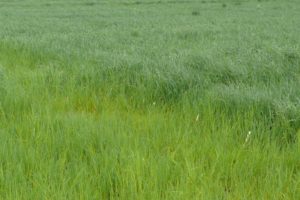Alfalfa winterkill is particularly severe in the Ottawa Valley and New Liskeard areas. There are many options to consider for emergency forage, depending on the calendar date, urgency for short term feed, and forage yield and nutrient quality requirements. Refer to “Forage Options When Alfalfa Winterkill Strikes” (https://fieldcropnews.com/?p=6680) Forage supplies are extremely tight, and forage acreage needs to be increased to rebuild inventories.
If winterkill is identified early, usually the best option is to replace the winterkilled stand by seeding a new forage stand in a new field in the crop rotation. Corn can follow the winterkilled alfalfa to take advantage of the 110 lb/ac N credit and the rotational benefit 10-15% corn yield increase. A direct seeding can be done, or use a companion crop such as cereals or cereal-pea mixtures. However, the window for successful spring forage seedings will close soon. Because of alfalfa autotoxicity, do not reseed alfalfa into a winterkilled alfalfa stand, unless it was seeded the preceding spring. Autotoxicity reduces the germination and growth of new alfalfa plants for the life of the stand.
In good grass stands, nitrogen (N) application can significantly increase yield and protein, easily paying for itself. In healthy grass stands, 1 lb of N can produce an additional 25 – 40 lbs of hay. The first N application should be made at green-up in the spring. Under optimum conditions of a uniform, vigorous grass stand with no yield limitations, such as lack of rainfall, low P and K, bare patches, excessive weeds, or a delayed application, rates may be up to 125 lbs/ac (Table 3-6 Agronomy Guide). Less productive stands should be adjusted downward accordingly. For many grass stands this spring, 90 lbs/ac N may be optimum.
